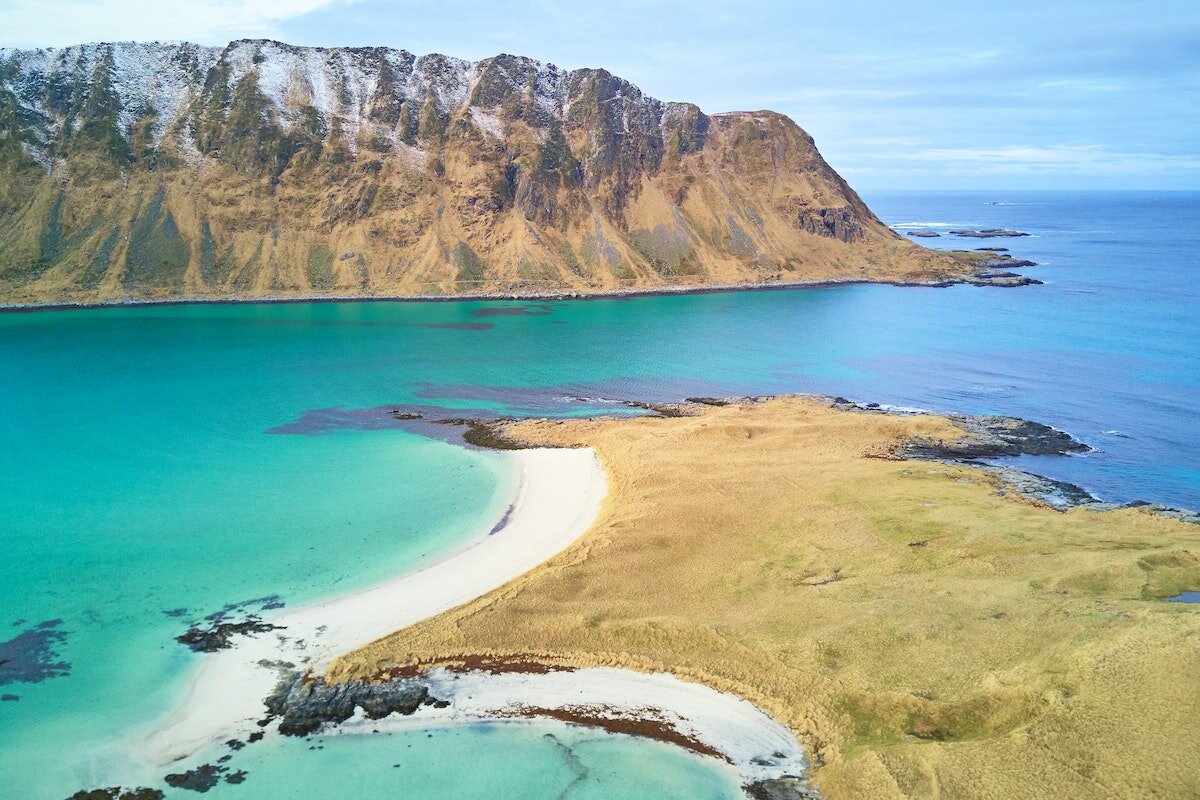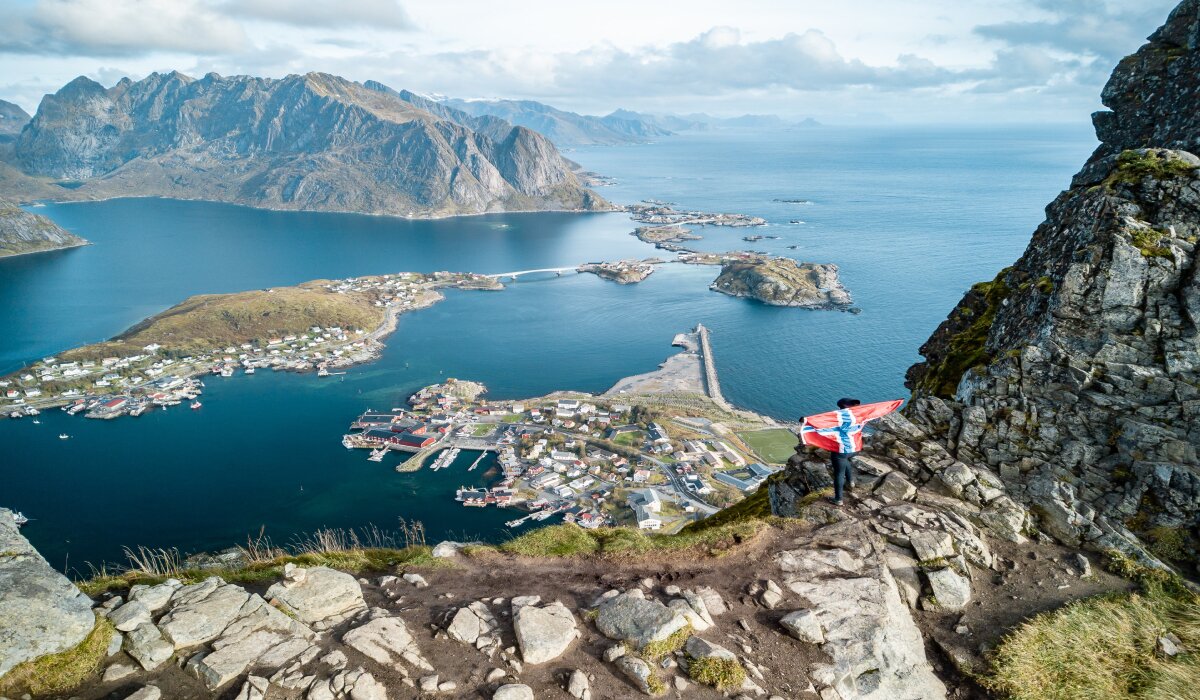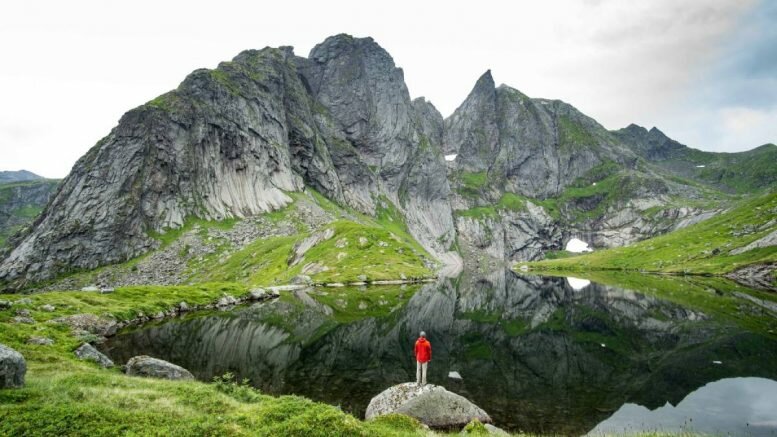Tourists flock to the Lofoten archipelago for its rocky peaks, arctic fjords, and white sand beaches. Now, there is one more reason to visit the beautiful Lofoten Islands.
There are many reasons why the Lofoten archipelago is one of the top tourist destinations in Scandinavia.
The razor-sharp mountains jut out of the arctic sea like nature’s skyscrapers. Their peaks provide incredible views of the entire length of the archipelago.
At the shore, white sand beaches line the coast and will make you question whether you are still in the Arctic circle.

With all these awe-inspiring features, it may seem as though Lofoten can’t get any more interesting. Yet, if you are curious about the natural world, there is one more reason to visit the beautiful Lofoten Islands.
All you have to do is take a peek at the rocks beneath your feet.
An area rich in history
As an outdoor playground, Lofoten offers a range of activities from hiking and climbing, to surfing and whale watching.
Not to mention the renowned fishing culture and their unique preservation method of drying fish on large open-air racks. Your nose will never forget what the locals call “the smell of money”.
There is also Viking history in Lofoten. One of the world’s largest longhouses built by the Vikings is located at the Lofotr Viking Museum on Vestvågøy.
Lofoten’s history goes further back still, when its rocks were 40 km beneath the surface and earthquakes shook the region. Read on to find out why this is one more reason to visit the beautiful Lofoten Islands.
A home to fossil earthquakes
Geologists journey to the Lofoten Islands every summer in search of clues that unravel the interior workings of our planet.
Specifically, they look for rocks that contain evidence of past earthquakes.

The rocks are almost 2 billion years old. They have experienced a long history of magmatism, mountain building, and breaking in the form of earthquakes.
Around 400 million years ago, the western coast of Norway formed a mountain range called the Caledonides. The building of the Caledonides was consequently accompanied by numerous earthquakes.
The fossil earthquakes are now exposed in Lofoten’s mountains. They offer geologists a glimpse into how rocks break and transform after an earthquake.
How to find a fossil earthquake
Fossil earthquakes are one more reason to visit the beautiful Lofoten Islands, but how do you find them?
When an earthquake occurs, the rocks are subject to intense stresses that break the rocks along planar fractures or faults.
As the rocks slide past one another, the frictional heat produced is high enough to melt the rock.
The thickness of the melted region is on the order of millimeters to centimeters. The thin zone of melt stands no chance of retaining its heat and, consequently, it solidifies within seconds to minutes.
What is left is a thin dark, and sometimes glassy, vein in the rock which is known as pseudotachylyte.
The importance of fossil earthquakes
By studying pseudotachylyte and their surrounding rocks, geologists can unravel what happens within the short timeframe of an earthquake.
What causes the earthquake and its long-term effects on the rocks become clearer.
One side effect is that earthquakes provide pathways for fluids to interact with the rocks. The fluids help dissolve and precipitate minerals that contribute to an overall transformation of the crust.
Additionally, the fossil earthquakes in Lofoten are analogous to those that take place today in the Himalayas. They offer a glimpse into the processes that take place deep within the Himalayan mountains.
Lofoten’s fossil earthquakes are therefore important for understanding one of the world’s most destructive natural catastrophes.
A natural laboratory
The Lofoten Islands are thought of as a natural laboratory for understanding earthquakes.
Active research at the University of Oslo continues to unravel the deep history of fossil earthquakes in the Lofoten Islands.
If you are curious about the natural world, fossil earthquakes are one more reason to visit the beautiful Lofoten Islands.
Source: #Norway Today / #NorwayTodayTravel
Do you have a news tip for Norway Today? We want to hear it. Get in touch at [email protected]





Be the first to comment on "One more reason to visit the beautiful Lofoten Islands"